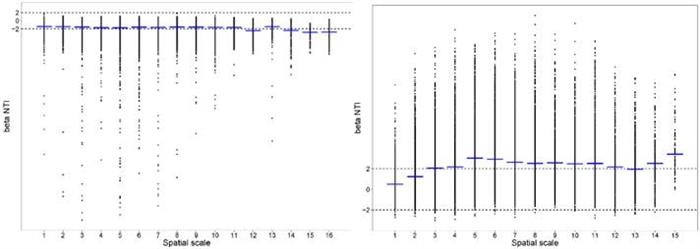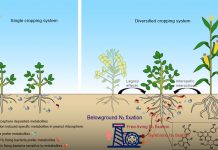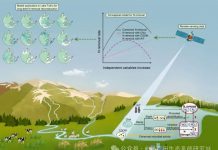生物群落如何构建是生态学中的核心问题之一,生态学家对植物的群落构建过程已经进行了大量研究,然而在微生物群落构建方面的研究则相对滞后。当前,土壤微生物生物地理学主要关注微生物的空间分布格局及其驱动因子,而对不同空间尺度下微生物的群落构建过程研究较少。
基于此,褚海燕课题组于2014年11月在华北平原麦田采集了243份土壤样品,样点之间跨度最大为1092公里。利用高通量测序与生物信息分析技术,研究了土壤细菌的群落组成、多样性及其空间分布,并利用群落构建分析方法(βNTI)和空间尺度分析方法(PCNM)解析了华北平原土壤细菌在不同空间尺度下的群落构建过程;同时,比较了自然生态系统(青藏高原)与农田生态系统(华北平原)土壤细菌的群落构建过程的异同。结果表明,华北平原麦田土壤细菌群落构建在空间距离大于900km时以确定性过程为主,而150-900km 范围内以随机性过程为主;而青藏高原土壤细菌的群落构建在130-1200 km范围内以确定性过程为主;表明了农田与自然生态系统土壤微生物群落构建的不同,并都具有尺度依赖性。主要原因是:华北平原是高强度利用的农田生态系统,作物种植管理模式相似,环境差异相对较小;青藏高原地理隔离效应明显,生境变化快,因此在较小的空间范围内细菌群落构建就表现出较强的确定性过程。本研究首次在不同空间尺度下研究了华北平原土壤微生物的群落构建模式,该结果为从土壤微生物学角度评估区域尺度下我国农田土壤的农学及生态学效应提供了科学依据。
Shi Y, Li YT, Xiang XJ, Sun RB, Yang T, He D, Zhang KP, Ni YY, Zhu YG, Jonathan M. Adams, Chu HY. Spatial scale affects the relative role of stochasticity versus determinism in soil bacterial communities in wheat fields across the North China Plain. Microbiome, 2018, 6: 27
Abstract
Background
The relative importance of stochasticity versus determinism in soil bacterial communities is unclear, as are the possible influences that alter the balance between these. Here, we investigated the influence of spatial scale on the relative role of stochasticity and determinism in agricultural monocultures consisting only of wheat, thereby minimizing the influence of differences in plant species cover and in cultivation/disturbance regime, extending across a wide range of soils and climates of the North China Plain (NCP). We sampled 243 sites across 1092 km and sequenced the 16S rRNA bacterial gene using MiSeq. We hypothesized that determinism would play a relatively stronger role at the broadest scales, due to the strong influence of climate and soil differences in selecting many distinct OTUs of bacteria adapted to the different environments. In order to test the more general applicability of the hypothesis, we also compared with a natural ecosystem on the Tibetan Plateau.
Results
Our results revealed that the relative importance of stochasticity vs. determinism did vary with spatial scale, in the direction predicted. On the North China Plain, stochasticity played a dominant role from 150 to 900 km (separation between pairs of sites) and determinism dominated at more than 900 km (broad scale). On the Tibetan Plateau, determinism played a dominant role from 130 to 1200 km and stochasticity dominated at less than 130 km. Among the identifiable deterministic factors, soil pH showed the strongest influence on soil bacterial community structure and diversity across the North China Plain. Together, 23.9% of variation in soil microbial community composition could be explained, with environmental factors accounting for 19.7% and spatial parameters 4.1%.
Conclusions
Our findings revealed that (1) stochastic processes are relatively more important on the North China Plain, while deterministic processes are more important on the Tibetan Plateau; (2) soil pH was the major factor in shaping soil bacterial community structure of the North China Plain; and (3) most variation in soil microbial community composition could not be explained with existing environmental and spatial factors. Further studies are needed to dissect the influence of stochastic factors (e.g., mutations or extinctions) on soil microbial community distribution, which might make it easier to predictably manipulate the microbial community to produce better yield and soil sustainability outcomes.








